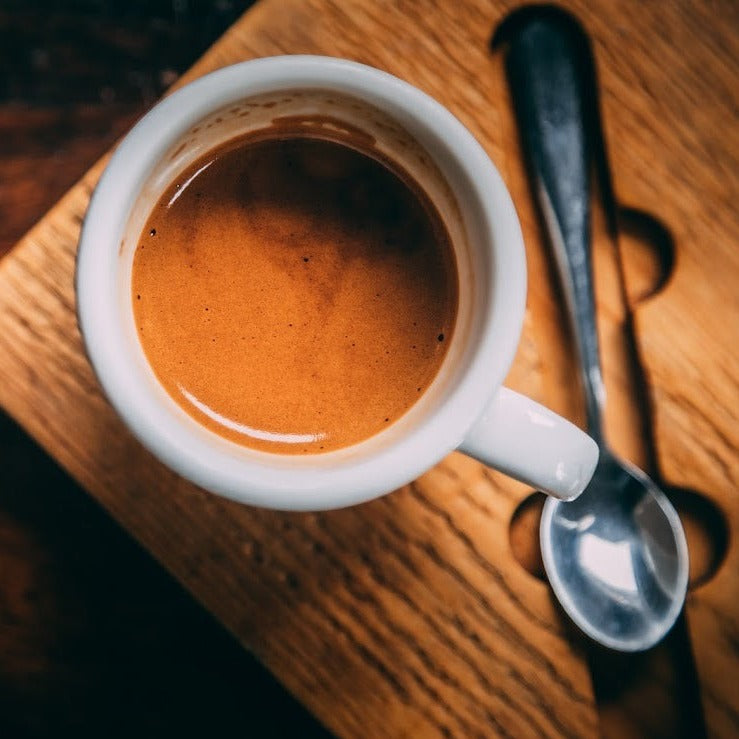Coffee Beans 101: Every Little Thing You Need to Understand About Coffee and Blended Coffee Beans
When it involves coffee, understanding the nuances of coffee and blended beans can change your day-to-day mug. You'll discover the unique qualities of Arabica and Robusta beans, and how each influences taste and caffeine material. From the growing process to roasting strategies, every action plays a role in your coffee experience. What makes the best brew? Let's discover the necessary elements that contribute to a remarkable mug of coffee.
Recognizing Coffee Beans: Selections and kinds
When diving right into the globe of coffee, comprehending the kinds and ranges of coffee beans is vital for every fanatic. You'll mostly experience 2 primary varieties: Arabica and Robusta. Arabica beans are recognized for their smooth, complex flavors and lower caffeine material, making them a preferred amongst coffee connoisseurs. On the other hand, Robusta beans pack a strike with a stronger, extra bitter preference and greater high levels of caffeine degrees, typically utilized in espresso blends.
Ethiopian Yirgacheffe provides brilliant flower notes, while Colombian beans give a well-balanced taste account. By familiarizing on your own with these beans and their tastes, you'll elevate your coffee experience and make more informed choices in your brewing trip.
The Growing Refine: From Seed to Bean
When you explore the journey of coffee, all of it begins with seed choice techniques that establish the structure for quality. From there, growing and collecting play vital roles in making sure the beans prosper. Handling approaches change those collected cherries into the coffee beans you love.
Seed Selection Strategies
Picking the right seeds is essential for producing top quality coffee beans, as it lays the foundation for the entire expanding process. You need to begin by choosing seeds from respectable sources that focus on quality and genetic variety. Seek selections recognized to grow in your specific climate and dirt problems. Take notice of the seed's age and storage space conditions, as fresh seeds often tend to germinate better. When feasible, choose organic seeds to minimize exposure to harmful chemicals. Think about the disease resistance of various ranges, as this can greatly affect your return. Finally, do not wait to talk to neighborhood farmers or specialists to obtain insights right into the finest seed options for your region. This expertise will certainly boost your coffee-growing experience.
Cultivation and Harvesting
As you nurture your coffee seeds into flourishing plants, recognizing the farming and harvesting process is essential for achieving the ideal flavor and top quality. Begin by growing your seeds in well-draining soil, preferably in a shaded area to secure them from direct sunlight.
Hand-picking is frequently the ideal method to guarantee only the ripest cherries are picked. Timing is essential; gathering as well late or too very early can affect the flavor profile of your beans.

Handling Techniques Explained
Once you've collected your coffee cherries, the next necessary step is processing them to change those vivid fruits right into the beans you'll brew. There are two major approaches: the completely dry process and the damp process. In the dry process, you spread out the cherries out in the sun to dry, permitting the fruit to ferment and present distinct tastes to the beans. On the various other hand, the wet procedure involves getting rid of the fruit immediately and fermenting the beans in water, leading to a cleaner preference. After handling, the beans are hulled, arranged, and typically dried again. Each method influences the flavor account, so trying out with both can assist you uncover your preferred mixture. Understanding these approaches is key to enjoying your coffee experience.
Toasting Methods: How Taste Is Created
When it pertains to roasting coffee beans, recognizing roast degrees is vital to revealing their distinct tastes. Each toasting technique influences the scent and boosts the flavor development procedure, offering you a richer coffee experience. Allow's check out just how these aspects integrated to raise your everyday mixture.
Roast Levels Explained
Roast levels play a necessary duty fit the flavor account of your coffee. When you select a light roast, you'll appreciate bright acidity and fruity notes. As you relocate to a medium roast, you'll discover an equilibrium of sweetness and intricacy, typically highlighting chocolate or sugar tastes. Dark roasts, on the various other hand, deliver vibrant, smoky attributes with less level of acidity, making them robust and abundant. Each degree arises from various roasting times and temperatures, impacting the beans' chemical structure. By understanding these degrees, you can better choose a coffee that matches your taste choices. Try out various roasts to uncover which one resonates with you, enhancing your total coffee experience and pleasure.
Effect on Aroma
The roast level not just affects the taste of your coffee but likewise greatly influences its fragrance. Each toasting strategy launches various unpredictable substances, shaping how your coffee smells. In addition, the freshness of the beans plays a crucial function; freshly roasted coffee releases extra fragrant oils, enhancing that luring scent.
Flavor Development Process
As you explore the flavor growth process, you'll discover that toasting methods play a crucial duty in forming the preference profile of your coffee. The roasting temperature and time straight affect the acidity, sweetness, and bitterness of the beans. Light roasts maintain more of the bean's initial flavors, highlighting flower and fruity notes. Medium roasts equilibrium level of acidity and body, supplying a well-rounded flavor. Dark roasts, on the various other hand, bring out bold, great smoky qualities while lessening the bean's integral high qualities. During roasting, chemical responses, like the Maillard response and caramelization, change the beans and enhance their complexity. Trying out with different roasting levels can help you discover your perfect mixture, so don't wait to taste and discover the abundant spectrum of flavors!
Espresso vs. Blended Coffee: Key Differences
Coffee and combined coffee each offer distinct experiences that satisfy various tastes and preferences. Coffee is a focused coffee brewed by forcing warm water with finely-ground coffee beans, leading to a rich, bold taste and a creamy layer of crema ahead. It's frequently enjoyed as a shot or used as a base for beverages like coffees and lattes.
On the other hand, mixed coffee combines various beans from various areas, developing an extra well balanced flavor account. You'll commonly discover blends that This Site highlight body, acidity, or sweet taste, making them flexible for different developing methods. While coffee concentrates on intensity, blended coffee might supply a more comprehensive variety of flavors that can change with each sip.
Inevitably, your option in between espresso and combined coffee boils down to your individual choice. Whether you hunger for a fast jolt or a leisurely cup, both alternatives have something tasty to use.

Developing Approaches: Opening the Perfect Mug
When it comes to brewing coffee, discovering the right method can transform your experience and elevate your mug. Each brewing method has its unique appeal and can substantially affect your coffee's flavor and aroma. Utilizing a French press allows you to appreciate look at this web-site a full-bodied and rich brew, while a pour-over approach gives a tidy, intense mug with distinct flavors.
If you prefer espresso, investing in a quality equipment can assist you understand the art of drawing shots. For benefit, a single-serve pod system supplies rate without sacrificing preference.
Don't ignore chilly mixture, which supplies a smooth, less acidic coffee perfect for hot days. Experiment with different techniques to discover what resonates with your palate. Each developing strategy opens up a new world of possibilities, so put in the time to explore and find your excellent mug. Delighted brewing!
Sampling Notes: Recognizing Taste Profiles
How can you absolutely value your coffee if you do not know what flavors to seek? Tasting notes are your overview to comprehending the intricate globe of coffee. When you sip, pay interest to the initial tastes that hit your taste buds. You might find fruity notes, like berry or citrus, or perhaps a nutty undertone. As you continue to taste, notice exactly how the tastes advance-- this is known as the "surface." Some coffees could leave a chocolatey or sugar aftertaste, while others may have an intense, clean surface.
Consider the body of the coffee, too; is it ventilated and light or thick and syrupy? Do not neglect acidity; a brilliant acidity can add activity, while a low acidity could offer a smoother experience. By recognizing these taste accounts, you'll deepen your connection with each cup, making coffee sampling a fascinating journey of discovery.

Tips for Choose and Keeping Coffee Beans
Picking and saving coffee beans appropriately can considerably boost your developing experience. Begin by choosing top quality beans that fit your taste. Seek quality; beans baked within the last two weeks are perfect. Check the roast date on the packaging, and buy from neighborhood stores or reliable roasters.
When you have your beans, store them in an impermeable container to avoid direct exposure to light, air, and dampness. A dark, cool place functions best, so prevent maintaining them in the refrigerator or fridge freezer, as this can present wetness. Just grind the amount you require to maintain quality; whole beans maintain taste longer than pre-ground coffee.
Last but not least, attempt to use your beans within 2 to four weeks after opening for peak taste. Adhering to these suggestions will certainly assure your coffee stays tasty and enjoyable, raising your day-to-day brew to new heights.
Frequently Asked Inquiries
How Much Time Do Coffee Beans Stay Fresh After Roasting?
Coffee beans remain fresh for about two weeks after toasting - SOE. You must keep them in an impermeable container, away from light and wetness. Afterwards, their flavor and aroma start to diminish significantly

Can I Mix Different Coffee Bean Varieties?
Absolutely, you can mix various coffee bean selections! Try out blends can boost tastes and create a distinct preference account. Simply make certain to balance the staminas and features of each selection for the best outcomes.
What Is the Suitable Grind Size for Espresso?
For coffee, you'll want a great work size, regarding the texture of table salt. This enables perfect extraction, leading to an abundant, savory shot. Experiment a little bit to find what matches your taste best!
Exactly How Does Elevation Affect Coffee Bean Flavor?
Altitude influences coffee you could try this out bean taste by influencing the growth rate and chemical structure. Greater elevations cause slower growth, which boosts level of acidity and complexity, giving your coffee a dynamic and distinct taste you won't fail to remember.
Exist Decaffeinated Variations of Coffee Beans?
Yes, there are decaffeinated versions of espresso beans. You can appreciate a rich coffee flavor without the caffeine kick. Just search for "decaf" blends at your local coffee bar or specialized store.
Coffee Beans 101: Everything You Required to Know Concerning Coffee and Blended Coffee Beans.
When diving right into the globe of coffee, understanding the types and ranges of coffee beans is essential for every lover.When it comes to toasting coffee beans, comprehending roast degrees is vital to exposing their distinct flavors. Coffee is a focused coffee brewed by requiring hot water with finely-ground coffee beans, resulting in a rich, strong taste and a luscious layer of crema on top.On the various other hand, combined coffee incorporates numerous beans from different regions, creating an extra well balanced flavor account.
Comments on “SOE Single Origin Espresso – Showcasing Flavors from One Region”